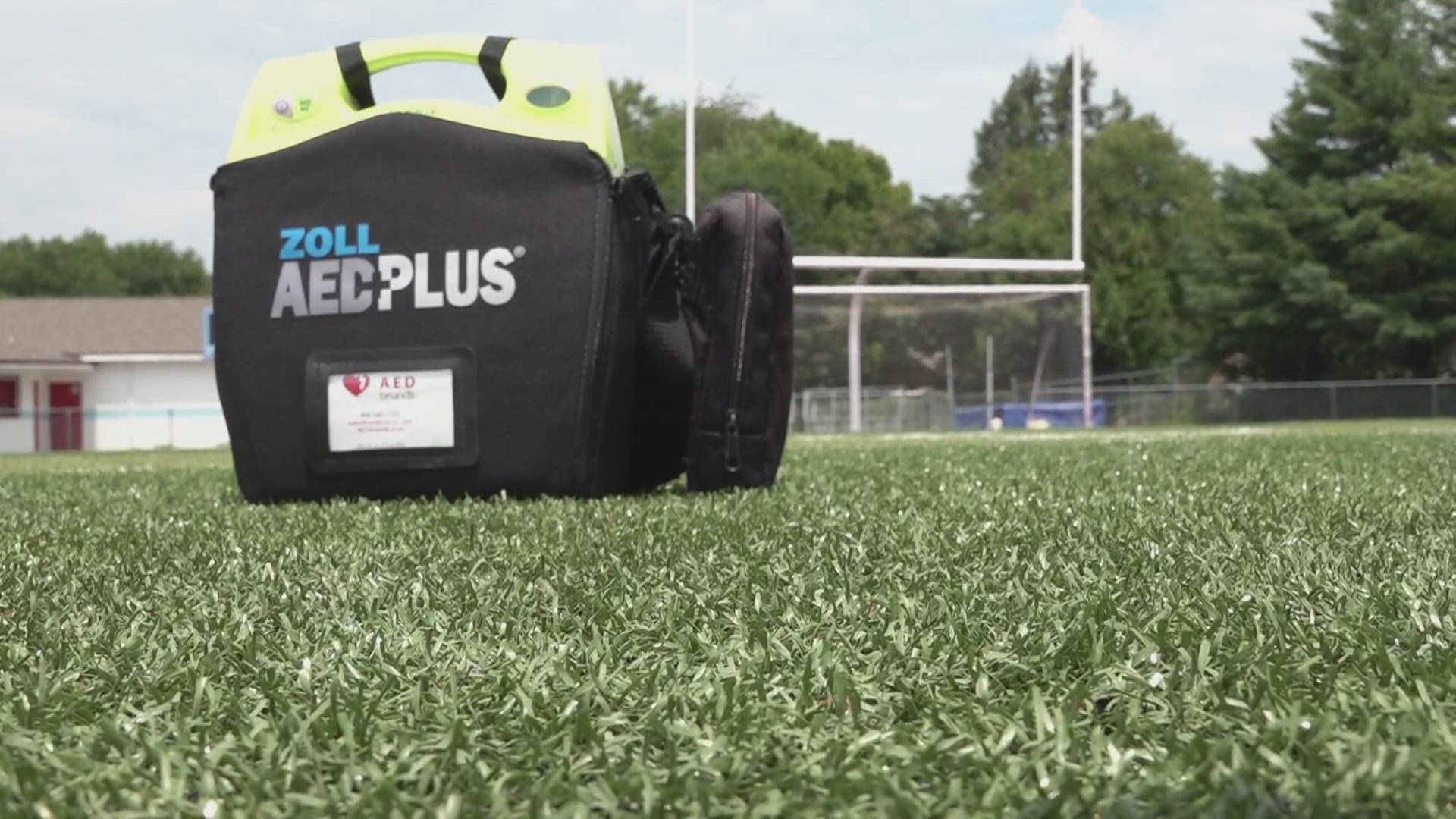KNOXVILLE, Tennessee — High schools across the area are starting to welcome students back to classrooms. Meanwhile, athletics leaders are working to respond quickly in case of any cardiac emergencies during sports.
Ever since Damar Hamlin and now Bronny James experienced sudden cardiac arrests, known as SCAs, more focus has been put on training coaches and athletic trainers on what to do in case of cardiac emergencies.
"With these high profile players, it creates a higher level awareness from everybody else," said Antonio Mays, head football coach at Austin-East High School. "It forces the powers that be to implement rules and procedures in place that can better equip us doing it."
A 2019 law made AEDs required at every public school across the state. It was pushed by Rhonda Harrill whose 13-year-old son, Tanner Lee Jameson, died in Blount County at basketball practice.
Thursday, on Tanner's 28th birthday, she says schools still need to do more.
Jayson Berlin is an athletic trainer at Knoxville Orthopedic Clinic but works at the Austin-East High School campus. There are several AEDs across the campus, and he always has one with him. But, with many sports occurring at once, he says it would always be good to have more.
"They say that there's crucial minutes to get that AED present," Berlin said. "As I get older, I can't run as fast to get to the other side of the school. So it could take time."
Coaches and trainers at Austin-East say that sudden cardiac arrest is something they can only try to prepare for. Warning signs are subtler than a heart attack.
Both Mays and Berlin said student-athletes need to hydrate, eat and train well. Most importantly, they said student-athletes need to listen to their bodies.
"You just got to be prepared," Berlin said. "I also tell them, when it comes to injuries, they know their body. So they need to tell me, 'Hey.' If something ain't right, don't try to be the hero and go the extra steps."
Mays said culturally, football needs to adapt so that athletes can feel comfortable speaking up when they are having any warning signs.
"Back in the days when I was playing, years and years ago, we had to be tough," Mays said. "So we would go up and tell the coach our chest is hurting, we're no longer sweating, or that the vision is getting foggy. We would get looked at as soft. Nowadays, we have to listen to those signs with the kids."
TSSAA has been working to increase safety within its athletic programs with a new initiative called Safe Stars. It includes more hands-on training for CPR compressions and AED training, as opposed to the previous standard of online training.
"Most athletes, most coaches are hands-on," Mays said. "We are kinesthetic learners. And that's what we need. We actually need to go through the process."

